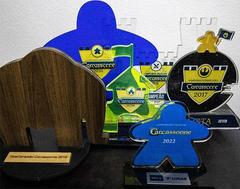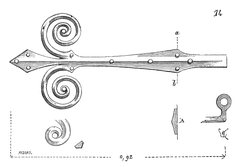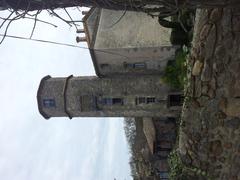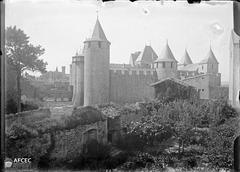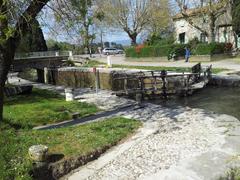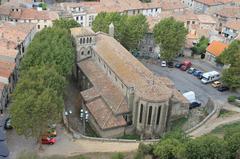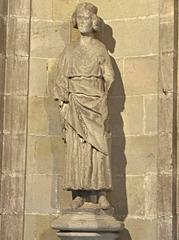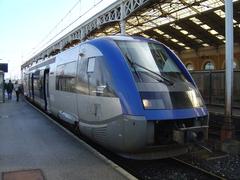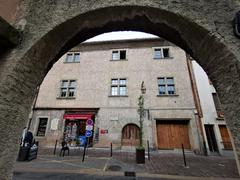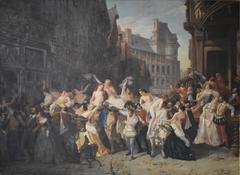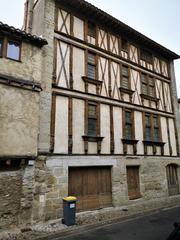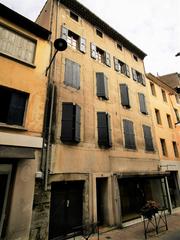Chapelle des Jésuites Carcassonne: Visiting Hours, Tickets, and Historical Sites Guide
Date: 14/06/2025
Introduction
The Chapelle des Jésuites, located in the heart of Carcassonne, France, stands as a testament to the city’s enduring religious, architectural, and cultural heritage. Built in the 17th century with royal support, the chapel has witnessed centuries of transformation—from its origins as a Jesuit college chapel to its current status as a premier cultural venue. Renowned for its Baroque architecture, historical significance, and exceptional acoustics, the chapel welcomes visitors seeking to explore Carcassonne’s rich past and vibrant present (Journées du Patrimoine; belcikowski.org; carcassonne.org).
This comprehensive guide details the history, architectural highlights, visiting hours, ticketing options, accessibility, and nearby attractions of the Chapelle des Jésuites. Whether you are a history enthusiast, architecture aficionado, or culture lover, you’ll find all the essential information to plan your visit and immerse yourself in Carcassonne’s unique heritage (grand-carcassonne-tourisme.fr).
Historical Overview
Foundation and Jesuit Era
Founded in the early 17th century, the Chapelle des Jésuites was integral to Carcassonne’s Jesuit college, established by royal decree in 1609. The Jesuits, devoted to education and spiritual formation, constructed the chapel to reflect their values—emphasizing harmony, acoustics, and understated Baroque refinement. By 1668, the college complex spanned 3,000 m² and accommodated 180 students, becoming a regional center for learning and worship (Journées du Patrimoine).
Expulsion and Secularization
In the mid-18th century, political and religious shifts led to the Jesuits’ expulsion from France. The Carcassonne college closed, and the chapel transitioned to secular use. Despite challenges during the French Revolution and subsequent reorganization of church properties, the chapel survived, protected by its robust construction and strategic location.
19th and 20th Century Transformations
The 19th century saw renewed interest in Carcassonne’s heritage, notably through Eugène Viollet-le-Duc’s restoration of the medieval Cité (Spotting History). The chapel, while not the main focus, benefitted from this preservation movement. In the 20th century, it was adapted for civic and cultural uses, ultimately undergoing major restoration in 2000 to become a modern auditorium while preserving its historic character (Journées du Patrimoine).
Architectural Features
The Chapelle des Jésuites exemplifies Jesuit Baroque architecture with clean lines, balanced proportions, and subtle decoration. Key features include:
- Vaulted Ceilings: Restored to original gray and yellow tones, enhancing both visual impact and acoustics.
- Grand Baroque Retable: Dominates the chancel, crafted with intricate detail.
- Octagonal Bell Tower (“La Mirande”): Crowns the choir and is visible from the exterior (Mescladis).
- Sober Portal: The understated 1720 entrance contrasts dramatically with the ornate interior.
Restoration efforts have ensured that the chapel retains its historical and artistic integrity while serving contemporary cultural needs (belcikowski.org).
Cultural and Community Role
Today, the Chapelle des Jésuites is a thriving hub for concerts, exhibitions, and community events. Its acclaimed acoustics make it a preferred venue for classical and chamber music performances, particularly the popular “Jeudis de l’Auditorium” concert series. The chapel also supports educational programs and artistic workshops, continuing its legacy of fostering learning and cultural engagement (carcassonne.org).
Visiting Information
Location
- Address: Rue des Études, 11000 Carcassonne
- District: Bastide Saint-Louis, near Place Carnot (Tourisme Carcassonne)
Opening Hours
- General Visits: The chapel is open primarily during scheduled concerts, exhibitions, and events.
- Box Office Hours: Monday–Thursday, 10:00–12:30 and 14:00–17:30; Friday, 10:00–12:30. Closed Friday afternoons and on public holidays (Festival de Carcassonne).
- Note: The chapel is not open for casual, unscheduled visits outside event hours.
Tickets and Admission
- Admission: Many events are free or low-cost. Special events, especially during the Festival de Carcassonne, may require advance ticket purchase via the official box office or online platforms.
- Guided Tours: Available by arrangement or during special cultural programming.
Accessibility
- Physical Access: Generally wheelchair accessible; contact the venue in advance for specific requirements.
- Visitor Facilities: Restrooms are available during events. No café or gift shop on site.
How to Get There
- Public Transport: Accessible by bus lines stopping near Place Carnot. The chapel is a 15-minute walk from the train station.
- Parking: Limited public parking near Place Carnot and in the Bastide district. Walking or public transit is recommended.
Cultural Programming and Events
- “Jeudis de l’Auditorium”: Monthly chamber music concerts from October to May (Guide Tourisme France).
- Festival de Carcassonne: The chapel hosts international artists and themed recitals during the summer festival (Festival de Carcassonne).
- Exhibitions and Conferences: Regularly scheduled, with details on the official tourism website.
Nearby Attractions
Enhance your visit by exploring:
- Cité de Carcassonne: Medieval fortress and UNESCO World Heritage Site.
- Château Comtal: Historic castle within the Cité.
- Basilique Saint-Nazaire: Romanesque-Gothic church renowned for its stained glass.
- Musée des Beaux-Arts: Art museum showcasing regional and European works.
Frequently Asked Questions (FAQ)
Q: What are the visiting hours?
A: Open during scheduled concerts and events; not open daily for unscheduled visits.
Q: Are tickets required?
A: Many events are free or low-cost; special events require advance tickets.
Q: Is the chapel accessible?
A: Generally yes, but some limitations exist due to the historic structure—contact ahead for assistance.
Q: Can I take photos?
A: Photography is allowed for personal use but may be restricted during performances.
Q: Where can I get more information?
A: Grand Carcassonne Tourism Office, Festival de Carcassonne, Carcassonne.org.
Visuals and Interactive Media
Environmental and Social Responsibility
The chapel encourages sustainable tourism, with eco-friendly transportation options promoted via the Grand Carcassonne tourism portal’s “eco-mode” (grand-carcassonne-tourisme.fr).
Conclusion
The Chapelle des Jésuites is a living monument—honoring Carcassonne’s storied past while serving as a beacon of cultural vitality today. Plan your visit to experience its architectural marvels, world-class acoustics, and dynamic programming. For event updates and visitor tips, check official resources and download the Audiala app for real-time notifications and ticketing.
Explore more Carcassonne attractions, and let the Chapelle des Jésuites be the highlight of your cultural journey!
References
- Journées du Patrimoine: Chapelle des Jésuites
- belcikowski.org
- carcassonne.org
- Spotting History: Fortified City of Carcassonne
- grand-carcassonne-tourisme.fr
- Guide Tourisme France
- Mescladis
- Festival de Carcassonne
- Aude Tourisme
- Tourisme Carcassonne
- Musique et Patrimoine de Carcassonne
- Musée du Patrimoine
